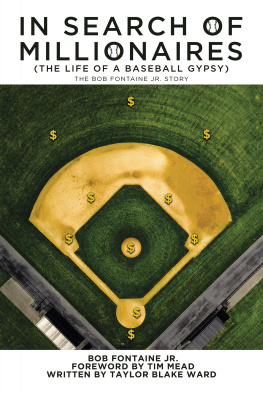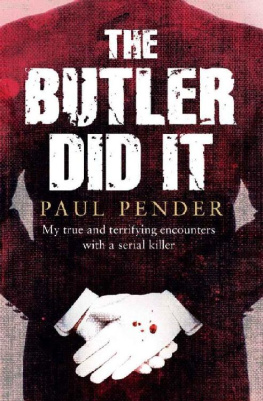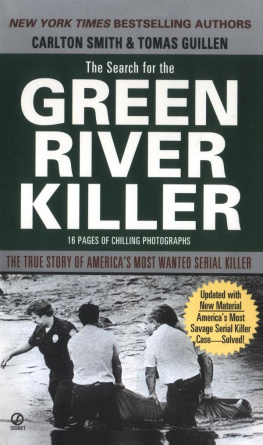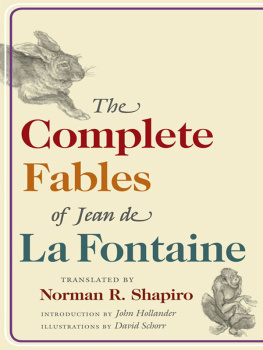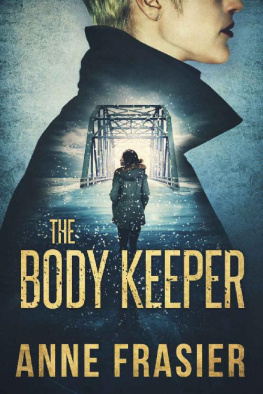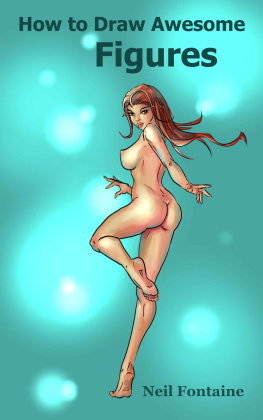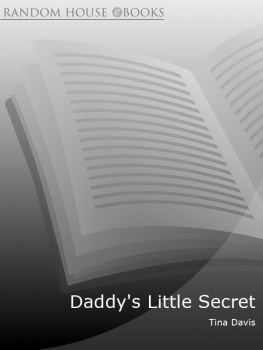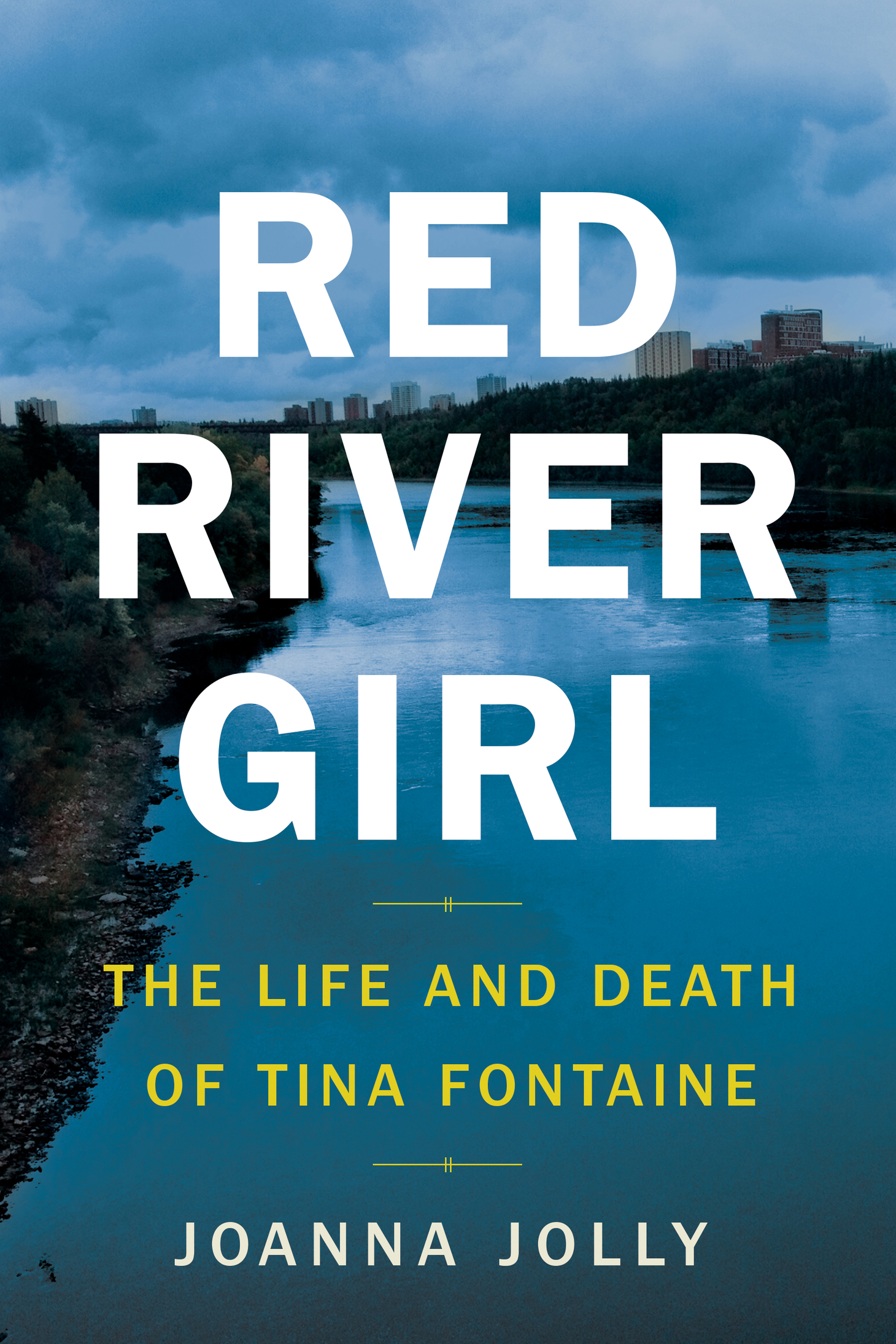ACKNOWLEDGMENTS
RED RIVER GIRL OWES A DEBT OF GRATITUDE TO MANY who opened their lives, work and emotions to me. In Sagkeeng, I am thankful for the warm welcome and cooperation of Thelma and Joe Favel, their family and foster children. Im also grateful for the knowledge shared by Liliane Cook, Marilyn Courchene and Cindy Guimond and residents of the reserve. In Winnipeg, Nahanni Fontaine and Bernadette Smith helped guide me through the issue of violence against Indigenous women with passion and eloquence. James Favel and the Bear Clan showed me the strength and compassion within the North End community. Samantha Lynn Chief, Jennifer Roulette and Candace Neal inspired me with their resilience and forgiveness.
John ODonovan was my main source for police information and Im hugely grateful for his patience, openness and sense of humour. When I arrived into a freezing winter, his wife, Mary, made sure I had thick enough gloves and was always a kindly presence. I would like to thank the entire ODonovan family for allowing me to dominate so much of Johns time over the past few years. Im also grateful to a number of Winnipeg Police Service officers, especially Mo, Candace and Jenna who provided a fascinating insight into the world of undercover policing. Danny Smyth, Wade McDonald, Esther Schmieder, Tracy Oliver, Kevin Pawl provided vital details, as did forensic pathologist, Dr Dennis Rhee.
Im grateful to Jim Ross, Tony Kavanagh, Andrew Synyshyn and his colleagues for taking the time to explain the complexities of the legal case against Raymond Cormier. At the University of Guelph, Kate Puddister was an invaluable expert on Mr Big operations. From the University of Manitoba, Lorna Turnbull and Marnie Brownell provided useful background on child welfare in the province.
As a stranger to Winnipeg, I relied on the generosity of local journalists, in particular Gordon Sinclair, Nancy Macdonald, Brittany Greenslade, Katie Nicholson and Jillian Taylor. I want to say a special thank you to the CBCs Caroline Barghout for her friendship and impressive investigative skills. Matthew Komus, Christopher Trott and Sandy Riley helped fill in my historical knowledge and Martha Troian provided research. Finally, I couldnt imagine spending so much time in Winnipeg without the love, hospitality and home-cooking of my old friends, Sylvie Houghton and Mark Carriere.
Writing this book has brought new Canadian friends. Im grateful to Stephen Maher for his early support and introduction to Penguin and to Shannon Masters for sharing her experiences as an Indigenous writerand for an awesome road trip across the prairies.
Red River Girl began life as a BBC story. Im grateful to Micah Laidlow for her comment which became the spark that set the process in motion. Im deeply indebted to David Botti and Lynsea Garrison whose brilliant, creative talents made Red River Women both an online and radio success, Paul Kerley for production, and my editorsBen Bevington, Stephen Mulvey and Bridget Harneyfor having the foresight to commission the story. At the BBC, Keith Blackmore was an encouraging mentor. Im grateful to Michael Dwyer from Hurst Publishers for setting me on the road to writing. The Shorenstein Center at the Harvard Kennedy School provided a welcome respite from daily news and the chance to conceive of a longer project. I thank Tom Hundley and the Pulitzer Center for their financial support and the Royal Society of Literature Giles St Aubyn Award for Non-Fiction for their commendation.
At Penguin Canada, I would like to thank Diane Turbide for her wisdom and patience in guiding me through the process of writing. Im extremely grateful to Alex Schultz for providing an intelligent and thoughtful copy edit. Here in the UK, Sarah Savitt at Virago gave much needed insight and encouragement. I feel extremely lucky to have the support of my brilliant and positive agent, Toby Mundy.
Writing is hard and I feel blessed to have many writer friendsLisa Woollett, Jill McGivering, Ann Tornkvist, Solitaire Townsend and Minka Nijhuisto sympathize with when times were tough. Thanks to those who read early drafts, especially Vibeke Venema, Claire Lowman and Simon Ponsford. And to the friends who held my hand, spirited me away and reminded me to laugh; Jake Morland, Ali McConnell, Mark Sainsbury, Stefan Kyriazis, Tara McKelvey, Sarah Faber, Teresa Clifton and all the swimmers in our Daphne du Maurier squad lane.
Finally I want to say a huge thank you to my family who saw me through the long days of writing. To my mother, Marian, who read everything, including my roughest notes, and told me how good they were even when they werent. To my father, Pran and his wife, Jenny, who kept me going. And to my wonderful sister, Anita, her partner, Ioan, and my nieces and nephew, Nel, Nona and InigoI couldnt have done it without you.
THE RED IS AN UNFORGIVING RIVER
It starts with a river. The Red River plots a wandering course north across the Canadian Prairies, snaking its way through the city of Winnipeg. It curves through the urban landscape, spawning towering glass structures and grand-pillared offices at the point where it meets its tributary, the Assiniboine. The Red is Winnipegs lifeblood and the reason for its existence, a highway for the European colonizers who came in search of fur and an ancient gathering place for the Indigenous peoples they traded with. In summer, it hosts fishing trips and dragon boat races. In winter, its frozen waters become skating trails and hockey rinks. Beside its banks are the rail lines that brought Winnipeg its immigrants and wealth, and the suburban gardens where its citizens now relax. But the Red has a darker, more complex role. The river is a drain, a muddy artery clogged with secrets. The homeless build shelters on its banks, waste pollutes its waters, and the desperate choose it as a place to die by suicide, surrendering their lives to its brown, silty depths.
On the morning of August 17, 2014, the Red River was witnessing an unusual clamour of activity as police dive boats motored into position under the metal trusses of the Canadian National Railway bridge. Onlookers gathered to watch as police divers lowered themselves backwards into the water, causing ripples to glint gold in the morning sun. They werent looking for the fifteen-year-old Indigenous schoolgirl who had been reported missing the week before. The reality was that in Winnipeg young Indigenous women often disappeared into the underbelly of the city. It rarely warranted such a thorough river trawl. Instead, the boats were searching for the body of Faron Hall, a local hero who had, two days earlier, walked down to the rivers edge, removed all his clothes, placed them neatly in a pile, and waded into the warm, muddy water.
Hall was a homeless alcoholic who had shot to national fame in 2009 after performing two rescues in the river. The first was of a teenage boy who had fallen from a bridge while dodging traffic on a cold May evening. Hall had dived into the icy water and pulled the boy out of the strong current, which was dragging him under. Hall didnt see anything special in the rescue. He had learned to swim during his childhood on the Dakota Tipi First Nation reserve, and he felt it was his duty to help those who werent so able. A few months later, he was called on to use his swimming skills again. After a day spent drinking with friends by the river, a woman had slipped and fallen in. Her boyfriend jumped in to help, and Hall, realizing that they were both in trouble, quickly followed. He managed to save the woman but not the man, a failure that weighed heavily on his conscience. The Red is an unforgiving river, he later told a local reporter. It can take your life and spit you out.


